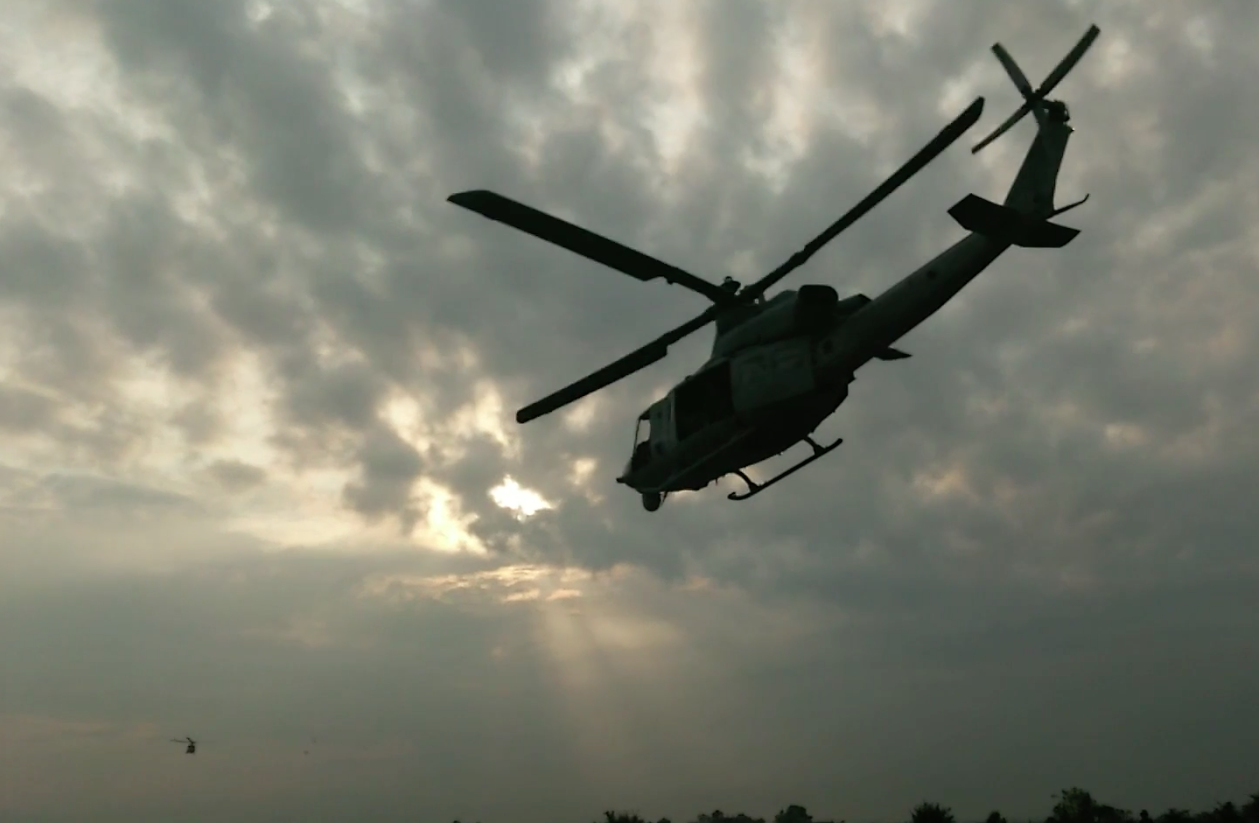USNI News polled its writers, naval analysts and service members on what they consider the most important military and maritime stories in 2015.
Harriers Strike ISIS
In between U.S. Navy carrier deployments in the Persian Gulf, Marine AV-8B Harriers picked up some of the slack in the ongoing U.S. Operation Inherent Resolve strike missions against the Islamic State in Iraq and Syria (ISIS).
“The Kearsarge Amphibious Ready Group with the embarked 26th MEU, along with our coalition partners, are here to degrade and destroy ISIL’s current operations under OIR,” Kearsarge ARG commander Capt. Augustus Bennett said, referring to the Islamic State by an alternate name, the Islamic State of Iraq and the Levant.
“The combined ARG-MEU team is an expeditionary Navy/Marine Corps force that stands ready and has been trained for these types of operations. We’re here to assure our allies, deter any adversaries and provide a persistent U.S. presence here in the U.S. 5th Fleet area of operations.”
The legacy Harriers are set to be replaced over the next ten years by the emerging Lockheed Martin F-35B Lighting II Joint Strike Fighters (JSF).
“The U.S. Marine Corps will phase out the Boeing AV-8B Harrier II jump jet by 2025 — about five years earlier than planned — and will instead extend the life of its fleet of aging Boeing F/A-18 Hornet strike fighters, according to the service’s recently released 2015 aviation plan,” wrote USNI News last year.
F-35B

The Marines began planning for the fleet introduction of the F-35B Joint Strike Fighter, which will bring increased range and stealth capabilities to the Marine Expeditionary Unit.
Deputy Commandant for Aviation Lt. Gen. Jon Davis said the plane will bring 5th generation capabilities to the fleet from the outset, and once the 3F software block is complete in 2017 the plane will also be able to serve as a 4th generation plane too – ditching its stealth to externally carry 3,000 pounds more ordnance than an F-18. The plane also brings enhanced networking capabilities, which Director of Expeditionary Warfare Maj. Gen. Chris Owens said will drive network improvements in the rest of the Marine Corps platforms and will allow for closer coordination with the carrier strike group.
The service is working to increase the inventory of spare parts for the new platform, which has been the primary area of concern among officials since the plane reached initial operational capability in the spring.
Planned Gulf of Guinea Deployments

The Marine Corps began developing plans to use alternative platforms for various mission sets around the world, particularly in under-covered areas such as a Gulf of Guinea.
Former commanding general of the Marine Corps Combat Development Command Lt. Gen. Kenneth Glueck, who retired earlier this year, told USNI News that MCCDC’s Seabasing Integration Division was in the “formative stages of developing alternative platform concepts of employment for the commandant’s consideration,” including a concept of employment to send the Expeditionary Mobile Base (formerly the Afloat Forward Staging Base) to the Gulf of Guinea.
Glueck said in a House Armed Services Committee hearing that putting Marines on the alternate platforms would “expand our reach of the V-22s down in that southern region of Africa.”
Director of Expeditionary Warfare Maj. Gen. Chris Owens told USNI News that the Auxiliary Platforms and Payloads Council was focusing its efforts on finding lift opportunities for the ground-based Special Purpose Marine Air-Ground Task Force (MAGTF) for U.S. Africa Command, which could include the concept MCCDC is developing.
Marines Lost in Nepal

Six Marines died following a UH-1Y helicopter crash in Nepal in support of a disaster relief operation.
The helicopter — part of III Marine Expeditionary Force (III MEF) — was assigned to Joint Task Force 505, stood up after a devastating 7.8-magnitude earthquake struck Nepal on April 25.
The Marines and two Nepalese soldiers died when Huey went down about eight miles outside of Charikot.
“The U.S. and Nepalese service members aboard the Huey ‘were determined to go forward with their duties, eager to contribute to our mission to alleviate suffering and come to the rescue of those in need,’ U.S. Marine Lt. Gen. John E. Wissler, the Joint Task Force 505 commander, said during a May 15 press conference,” reported USNI News.





